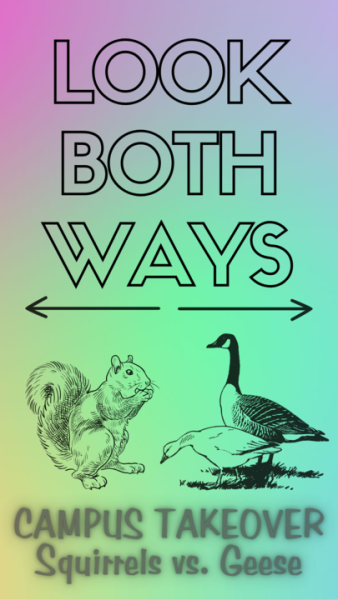Ford needs more like the Fusion, new plan
November 9, 2005
I worry about Ford. It has such a rich history – the deepest of American manufacturers, in my opinion – and it might be squandering it.
In 1908, the Model T Ford, what was essentially America’s first car, rolled off the assembly lines. Fifteen million more followed. In 1932, Henry Ford unveiled his last great achievement in the form of an affordable V-8 engine. The engine’s performance out-matched all its contemporary competitors, and many say it took them 20 years to catch up.
Again, in 1964, Ford turned the industry on its head with the introduction of the segment-defining Mustang. Both sexes enjoyed its timeless lines, and cash registers checked out 100,000 cars in the first 90 days.
Ford did it again in 1986 with the introduction of the Taurus. Fine, it’s not that interesting to look at now, but for the time, the slippery shape was unlike any other mid-size car. Gone were the harsh angles that typified ‘80’s design, and in came a shape that inspired such dramatic cars as the Dodge Intrepid and the Chrysler 300M.
Fast forward to today, Ford has the best designs of any large American company. The new Ford Fusion/Mercury Milan/Lincoln Zephyr line-up is wonderful – dramatic lines and harsh angles manage to come together cohesively. Who cares if 40 percent of the car is based on the Mazda 6? The 6 is a good car, some say a BMW for the less financially able.
Ford needed to get something out the door, and quickly. Honda and Toyota were having a field day with the Taurus, which started well, but turned into the equivalent of a wet noodle when the Japanese got serious about their Camrys and Accords.
Now it has the Fusion lineup, and it’s making waves. Wrote Don Sherman of Automobile magazine, after a generally positive review, “Ford is serious about kicking its way back into the mid-size-car business.”
The Fusion lineup is the only reason Ford didn’t totally flounder in the latest round of bad sales reports. It expected to sell about 2,700 units, but demand pushed another 1,300 out the door.
But it still didn’t escape the consequences of this summer when it cleared out dealership lots with employee pricing discounts. Despite a 7 percent raise in car sales for the year, it was down 3 percent overall. The culprit is common sense – people stopped buying SUVs.
And therein lies Ford’s dilemma. For the past decade, SUV and truck sales have kept Ford, like its Detroit counterparts, afloat. It’s a segment that’s never going to exist as it once did, and Ford needs a model lineup that anticipates the shift.
It has a good small car, but competitors like the Mazda 3 and Chevy Cobalt are fresher, and therefore, more interesting to the general consumer. For about a year now, Ford has sold a new version of the Focus in Europe. Like its predecessor, they are flying off shelves despite criticism Ford didn’t take enough of a risk with the styling.
To put that criticism into perspective, European design is far more progressive and “risqué” than what we see on the roads. The French largely lead the pack for risk taking, and other companies follow suit. The new Focus, mundane in Europe, would change the way many Americans look at small cars.
And so Ford chose not to bring it over.
Why? I don’t know.
Ford is in the same position Nissan found itself in at the beginning of the century – registered as only a blip on the industry radar and needing to find a path back to relevancy.
So Ford, here it is, a quick business plan all laid out. Don’t do things like the Freestyle anymore. It looked like Tupperware on wheels. So does the Escape, just smaller Tupperware.
Turn the failed Freestyle into something interesting to look at. Actually, just keep it dead and add an attractive wagon to the Fusion lineup. As for the Escape, it’s currently a secretary’s car. Its stance is spot-on, but the face is like one of those dogs that never smile. Add some interesting headlamps, reshape the grille, tack on some flashier wheels in the mid-term until the redesign is ready for production.
The Five Hundred is a missed opportunity. It blatantly steals its shape from VW’s out-going Passat. But where the Passat’s proportions look great, the Five Hundred looks slab-sided. It’s too big for the design to translate well.
Ford, you need another sports car. Something small, powered by a four cylinder and cheap. The Mustang is awesome, but it doesn’t stir interest in the Ford brand like it used to. Rather, the Mustang, like the Corvette, is a brand unto itself, and only creates interest in the Mustang brand.
Miss this opportunity, Ford, and you’ll leave that segment wide open for the Pontiac Solstice and Mazda Miata to dominate. With gas prices so high, buyers are not so keen on a big V-6 or V-8 sports car. An alternative would generate untapped interest.
Ford, now that the F-Series actually looks like something a construction worker would drive, your pick-ups are awesome. Don’t fire those people.
My issue is this: There doesn’t seem be a grand scheme guiding Ford’s future. There isn’t a tangible sense to how it introduces models or what it chooses to introduce. I know there are smart people at Ford – the Fusion is proof enough – but Ford isn’t selling just one car. Well, that is, unless it wants to keep losing money.
Take a chance, Ford. Remind buyers you don’t always follow. Sometimes you churn out a car that leaves jaws on the floor and wallets empty.












